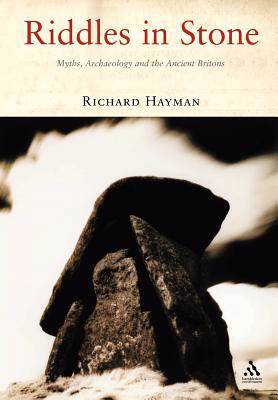
Bedankt voor het vertrouwen het afgelopen jaar! Om jou te bedanken bieden we GRATIS verzending (in België) aan op alles gedurende de hele maand januari.
- Afhalen na 1 uur in een winkel met voorraad
- In januari gratis thuislevering in België
- Ruim aanbod met 7 miljoen producten
Bedankt voor het vertrouwen het afgelopen jaar! Om jou te bedanken bieden we GRATIS verzending (in België) aan op alles gedurende de hele maand januari.
- Afhalen na 1 uur in een winkel met voorraad
- In januari gratis thuislevering in België
- Ruim aanbod met 7 miljoen producten
Zoeken
€ 178,45
+ 356 punten
Omschrijving
Who built Avebury and Stonehenge? Why and when were more than 600 stone circles, and thousands of barrows and cairns, erected in prehistoric Britain? What were they used for and what do they tell us about the beliefs and culture of their builders? Riddles in Stone is a history of the extraordinary variety of answers that have been given to those questions, by amateurs and professionals, archaeologists and astronomers, mystics and system theorists. While modern excavation and radiocarbon dating has undoubtedly advanced our knowledge of the sequence and date of the monuments, their purpose and meaning is still today hotly debated . Indeed no previous century has changed its mind so often as the twentieth - or provided such a welteer of conflicting opinions. Each theory has as much to say about its own time as it has about prehistory. The stones have been used to enhance the authority of the Bible, to endorse the civilizing mission of the British Empire - and to argue that the Ancient Britons could work a computer. In a reaction to modern industrial society, they have been credited with spiritual powers and natural energies. Even the views of modern archaeologists often reflect the latest adademic fad, rathen than a lasting solution. Riddles in Stone: Myths, Archaeology and the Ancient Britons is an entertaining and instructive account of a debate on a subject of endless fascination. Richard Hayman is an archaeologist. He read archaeology at University College, Cardiff, and has subsequently specialised in post-medieval archaeology, while maintaining his early interest in prehistoric monuments. He has also worked as a photographer.
Specificaties
Betrokkenen
- Auteur(s):
- Uitgeverij:
Inhoud
- Aantal bladzijden:
- 332
- Taal:
- Engels
Eigenschappen
- Productcode (EAN):
- 9781852855666
- Verschijningsdatum:
- 1/12/2006
- Uitvoering:
- Paperback
- Formaat:
- Trade paperback (VS)
- Afmetingen:
- 170 mm x 231 mm
- Gewicht:
- 671 g

Alleen bij Standaard Boekhandel
+ 356 punten op je klantenkaart van Standaard Boekhandel
Beoordelingen
We publiceren alleen reviews die voldoen aan de voorwaarden voor reviews. Bekijk onze voorwaarden voor reviews.








